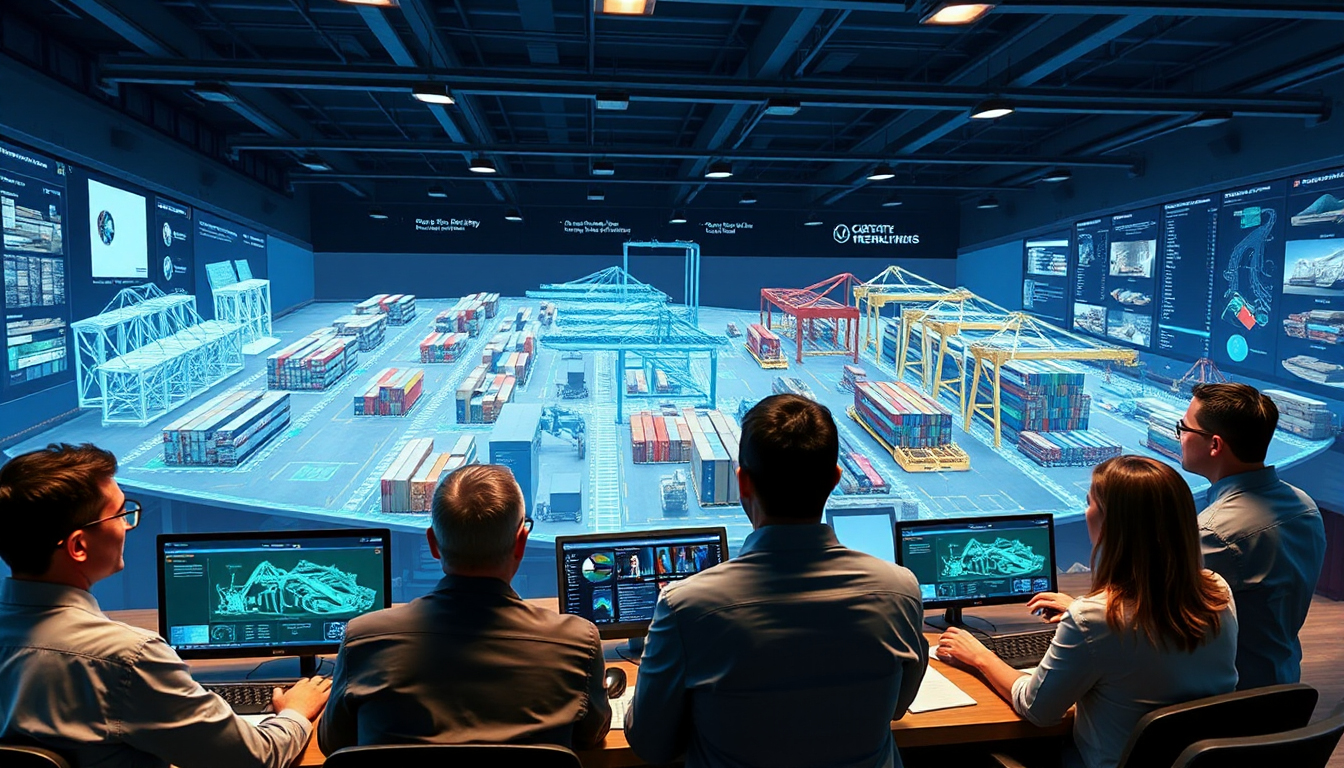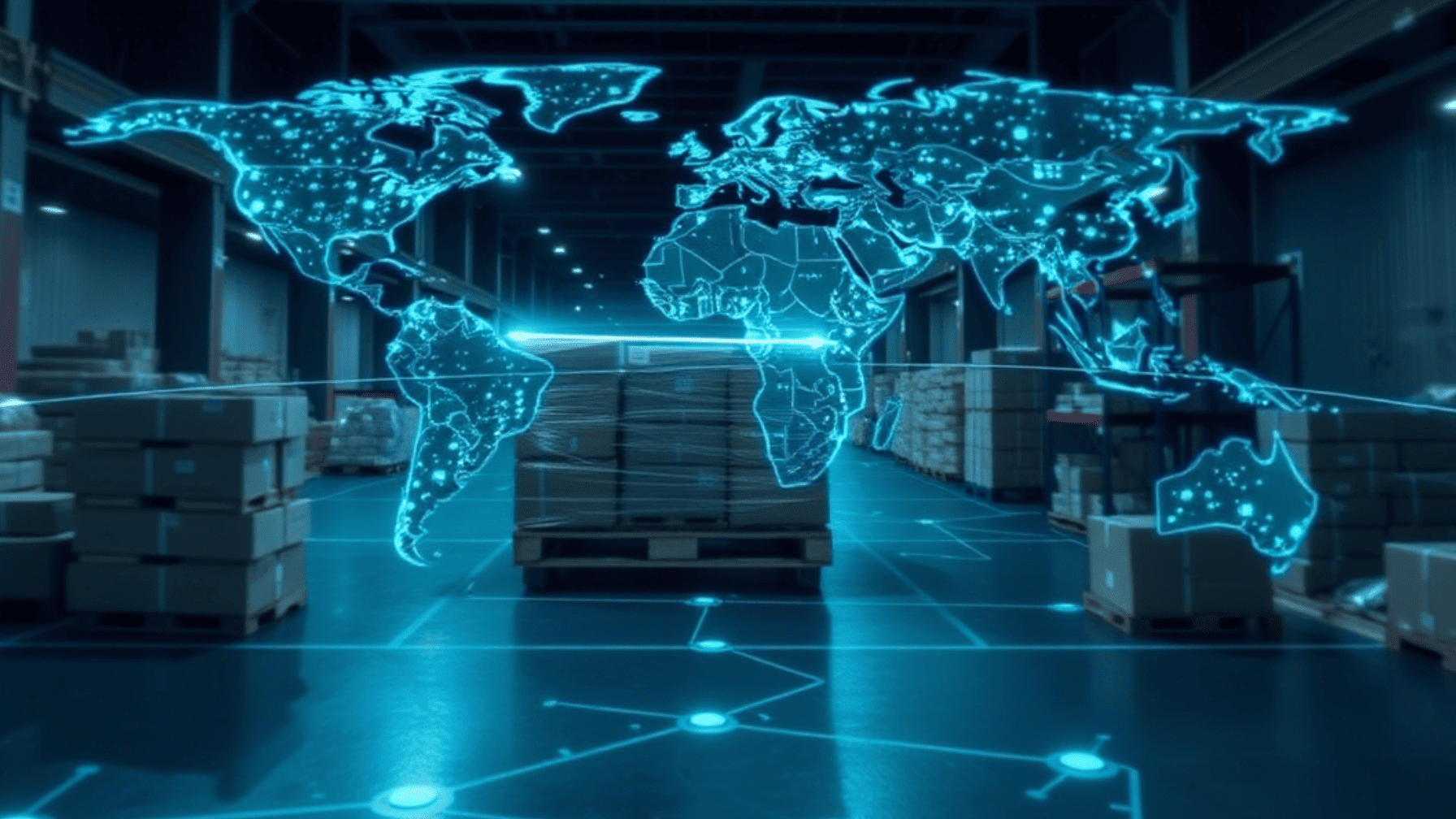A digital twin is more than a 3D model—it’s a real-time simulation layer for better logistics decisions.
Supply chain disruptions are going to be a continuing source of worry for logistics leaders in 2025, from port congestion and demand spikes to everything in between. Companies will need the ability to run “what-if” scenarios before making decisions that could have costly implications on their operation. In Gartner’s 2025 Supply Chain Tech Trends list, it was noted that over 60% of large logistics companies with revenue greater than $1 billion are currently using digital twins to simulate, optimize, and de-risk their operations.
In this article, we describe how digital twin technologies are being used within modern-day warehouses, ports, and transportation networks.
What is a Digital Twin in Logistics?
Digital twins are a digital likeness of a physical asset or process that is revised in real-time with actual data. When applied in a logistics context, it is a digital twin that brings together different sources, including:
-
- IoT sensors are installed in vehicles, containers, or warehouse equipment.
- Warehouse management systems (WMS) and transport management systems (TMS).
- Weather and traffic information.
- AI-based demand forecasts.
All of this data fuels simulations, which can determine bottlenecks, evaluate process changes, and optimize resource allocation.
Applications Across the Supply Chain
1. Warehouse Optimisation
Before making layout changes or changing workflows, businesses like DHL and Siemens use digital twins to try out storage strategies, equipment placement, and worker routes to save downtime and space.
2. Port Operations
The Port of Rotterdam also has a real-time digital twin that can combine tidal, weather, and shipping data to optimise the vessel arrival and departure schedules while reducing waiting times and fuel consumption.
3. Last-Mile Delivery
Simulations can enable carriers to identify peak load patterns and therefore, facilitate smarter route assignment and load balancing.
Benefits for Logistics Operations
-
- Optimized Operating Costs: Make better use of assets and reduce waste of resources.
- Improved Service Levels: Higher on-time delivery rates with predictive planning.
- Sustainability gains: CO₂ emissions reduction from fewer trips and no idle time due to a lack of planning.
According to Accenture’s report of 2025, digital twins can increase your supply chain's efficiency by as much as 15% and lower emissions by 10%.
Implementation Roadmap
-
- Data Integration: Link IoT devices, operational systems, and outside data sources.
- Simulation Layer: Create models that represent real physical processes.
- Scenario Testing: Run simulations to test a peak season, disruption, or a new service launch.
- Continuous Updates: Keep the twin together and relevant to the real world for ongoing accuracy.
Challenges
-
- Large upfront costs, especially for SMEs.
- Data quality and integration.
- Need for talent to deploy the models and the ability to articulate the takeaways from the models.
Conclusion
Logistics digital twins eliminate guesswork for better decisions. Using a virtual simulation of reality, companies can move quickly with less risk and use assets, people, and time efficiently and sustainably.
Key Takeaways
- A digital twin is more than a 3D model — it’s a real-time simulation layer for logistics.
- 60% of large logistics companies are already using the technology.
- Key use cases: warehouses, ports, last-mile delivery.
- Benefits: -15% costs, +10% sustainability.
- Challenges: cost, data quality, lack of expertise.









